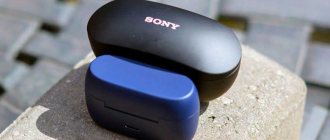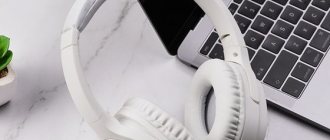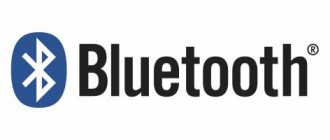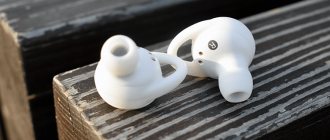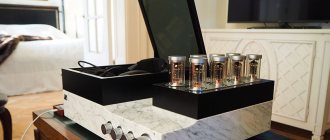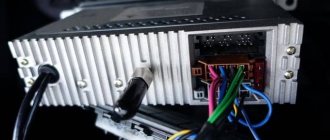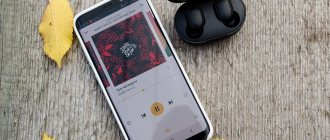There are things that are impossible to influence, no matter how much you might want to. One of them is the sound quality via Bluetooth. It simply has no way of becoming truly “uncompressed.”
You can make the highest quality headphones for an infinite amount of money. But they will not be able to transmit one-to-one high-quality music from your source. Because Bluetooth restrictions are reinforced concrete, and nothing can get around them. This is banal mathematics.
However, over the past few years, ways have emerged to achieve better sound quality even in such cramped conditions. First of all, this became possible thanks to codecs. The most famous and widespread of these “niche” codecs is Sony LDAC, which has recently become available to everyone.
I will try to clearly explain why Sony LDAC is needed and why the fact that it appeared in the new WF-1000XM4 headphones is generally a unique case for the industry.
What is a codec? Why it solves almost everything in wireless audio
A typical compressed MP3 or AAC music file distributed through streaming services weighs about 7-12 megabytes. But an enhanced, so-called “CD-quality” file in Apple Music weighs 3 and sometimes 7 times more, that is, from 25 to 80 megabytes . It is simply impossible to transmit this amount of data via Bluetooth in real time due to the limitations of Bluetooth.
The limitations of Bluetooth refer to the bandwidth of the standard. For the most current generation, 5.0, it is up to 2 megabytes per second - and this is under absolutely ideal, almost unattainable conditions. In reality, the transfer speed is limited to a maximum of 600-1000 kilobytes per second.
Alas, headphones can rarely get full access to the entire bandwidth of the Bluetooth module. He needs to perform other tasks as well. Therefore, streaming music compression and decoding algorithms are used to transmit data - so-called codecs . They compress the data output from the device in a certain way, and then decrypt it on the chip of the headphones themselves.
Common Bluetooth codecs are designed to provide the highest possible streaming quality under limited bandwidth conditions. The algorithms for compression and decompression, and then subsequent sound enhancement are different for each of them, but the result is generally the same, plus or minus. For example, Apple has long preferred the AAC codec, and in the world of Android smartphones, Qualcomm aptX is popular.
The first high-resolution Bluetooth codec, LDAC, .
Sony's LDAC codec transfers up to 3 times more data thanks to a specific compression algorithm and other optimizations - up to 990 kbps. It allows the headphones to reproduce almost lossless CD-quality music, that is, the same Lossless in Apple Music terminology. And only on it does it make sense to try to listen to real uncompressed tracks, Hi-Res Lossless.
Sony has been licensing LDAC for several years, allowing other headphone manufacturers to use the codec. However, at the end of 2021, only a few third-party ear models support the technology. The reason is simple: for effective operation at maximum throughput, high-quality Bluetooth radio modules are required that work uninterruptedly both in headphones and in smartphones. That is, it is necessary that both the sound source and the headphones are prepared for LDAC flawlessly.
Therefore, until 2022, it was believed that LDAC was simply impossible to add to completely wireless headphone models, the so-called TWS. After all, unlike over-ear and full-size models, TWS needs to exchange a much larger amount of data with the source and with each other via Bluetooth in order to function normally. Many manufacturers still have not achieved uninterrupted operation of TWS even with conventional codecs. Where is LDAC with its requests!
But Sony eventually did it.
Sony WF-1000XM4 are the first mass-produced fully wireless headphones with LDAC support. Many have already called this model the best headphones of 2022 . I can confirm what the matter is. And if there are no questions about headphones, then there are a lot of questions about sound sources.
A little about bluetooth audio codecs
To transmit sound via Bluetooth, special compression formats called codecs are used. The generally accepted standard is the SBC codec, which conforms to the Advanced Audio Distribution Profile (A2DP). All wireless earbuds support this standard, providing MP3 sound quality across generations.
A2DP supports many other codecs, including:
- AAC codec developed for Apple devices;
- aptX codec used on Android devices of leading brands;
- ldac codec from Sony.
Sony's development was created taking into account the requirements of A2DP. Ldac headphones are capable of reproducing audio streams at speeds of 330 – 990 kbps with a bitrate of 24 bits/96 kHz.
There is an important limitation. Need a good Android smartphone
LDAC support is available in some Android smartphones and expensive specialized audio players. But its presence does not at all guarantee normal music playback in this mode. Unfortunately, most vendors don’t bother and don’t even check this point.
As a result, I was convinced with my own eyes: in order to listen to LDAC normally on a smartphone, you need a truly flagship model , which has a powerful Bluetooth module, effective drivers for it and, most importantly, the cleanest possible operating system, devoid of glitches and bugs in everything related with audio path.
Finding one is a pain.
I've been using the WF-1000XM4 for several months paired with an iPhone, which itself does not support such a codec. But I really wanted to try LDAC, and so I regularly brought editorial Android smartphones to my desk.
The conclusions after testing dozens of “androids” are disappointing.
First, many models do not support LDAC at all. This does not even depend on the price of the device. Secondly, smartphones that support LDAC almost always fail to transmit the stream not only in maximum quality (990 kbit/sec, let me remind you), but even in limited bandwidth mode. The Bluetooth module falls off, the music lags and is interrupted, player applications crash, and the entire shell collapses, causing the device to reboot. Horror.
As a result, I was already desperate and gave up this idea. Out of two dozen attempts, I found only two smart phones that I didn’t like at all, but at least they coped with the task.
And then it dawned on me.
I contacted Sony and asked them for the sake of all this to hand over the company’s flagship smartphone - Sony Xperia 1 III . I figured that the parent company LDAC would definitely check this point.
And so it turned out. Hooray.
How to enable LDAC? (Android 8 and 9)
You can enable LDAC on your Android device only if you have installed Android version at least 8.0 Oreo. For this:
- Go to the “Settings” , select the menu item “About phone” (or “About phone” , “About tablet” ).
- Find the menu item Build number and tap on it seven times. This will open the hidden developer mode.
- In the “Settings” “Developer Options” item will appear . Tap on it and among the many items find “Audio codec for transmission via Bluetooth”
- Check "LDAC"
back to menu ↑
What's it like listening to LDAC on the best TWS of 2022?
For me, the Sony WF-1000XM4 already sound better than any current wireless earbuds. But with LDAC and lossless tracks it turns out completely magical.
To put it simply, the combination of LDAC, high-quality tracks and a powerful Android smartphone gives this model the most detailed and at the same time LUISH sound among all the TWS that I have ever tested in my life.
Firstly, the stage becomes noticeably wider . It still remains not “tube”, digital – a little flattened, devoid of airiness. But very small details, such as guitar creaks, clicks and sample effects, finally have a “registration”: they seem to get a new place in the virtual space and therefore become much more noticeable than before.
Secondly, you better feel the sound diversity of Lossless tracks . Familiar and already heard to death instrumental parts, spatial effects are endowed with fresh details. This is a cliched point in reviews, I know, but if you've listened to the same track dozens of times and then noticed something new about it for the first time thanks to other headphones, you'll understand what I mean.
Usually I caught this in full-size headphones, but here it turns out that the difference is felt within the same headphones, exclusively between AAC and LDAC codecs.
Finally, LDAC corrects the disadvantages of the model's sound through the AAC codec . With it, high frequencies receive sufficient presence and ringing, which I don’t always have enough when listening, say, through an iPhone. And the mids finally find more space for themselves against the backdrop of bass and vocals. This slightly reduces the strength of the bass, which is already more than enough here.
The WF-1000XM4 are still not audiophile headphones in the traditional sense. They embellish the sound, giving it bass and a couple of peaks in the high frequencies. It’s just that the final picture in LDAC mode is a little, but noticeably, more complete.
Thanks to the abundance of Lossless tracks in Apple Music, I played all the songs I knew well on these headphones via LDAC in the highest possible quality. In almost every one of them I noticed something new, previously unnoticed. Our office witnessed me voicing various obscene delights, launching one uncompressed track after another.
As always happens with highly specialized, most advanced “features,” listening to music on Sony’s TWS via LDAC is not without its drawbacks.
The battery life of headphones when connected to LDAC drops from a maximum of 12 hours to 5, which is the norm - the volume of transmitted data increases many times over. Also, the smartphone itself discharges faster, on average by one and a half times.
Enabling the highest possible LDAC quality in the Android menu requires keeping even the best smartphones in line of sight from the headphones. A Bluetooth connection from a pocket at 990 kbit/sec will “break” in urban environments, since such a volume of data is subject to the limitations of the standard and does not tolerate losses.
Therefore, I recommend using LDAC in maximum quality mode at home or at least just stationary. For the rest, there is an adaptive codec mode, which, although it will not give almost honest lossless, but the signal will not tear in motion.
LDAC and DSEE HX
Sony has another interesting technology that is worth mentioning. Sony audio products now come with built-in DSEE HX upscaling technology, and it's even included in some of the company's wireless headphones and speakers.
Sony's DSEE HX is a signal processing technology that attempts to recover lossily compressed files such as MP3s or Bluetooth data streams. This uses some software trickery based on collecting data from real audio samples. But it is obvious that it is impossible to completely and accurately reproduce lost data. However, although LDAC is a lossy codec, it still retains some high-frequency data, albeit with less detail. The use of this data, which is not available in higher compression files, should enhance the capabilities of the Sony DSEE HX. So this is something to consider when choosing any products with LDAC.
Sony engineers claim they cannot detect the difference between Hi-Res audio files and LDAC+DSEE HX upsampling. But obviously we have to check it ourselves.
back to menu ↑
A.A.C.
This codec provides better audio quality than SBC, but slightly worse than aptX HD and LDAC.
In general, AAC was created not so much for transmitting music wirelessly, but for storing it, and at the very beginning it was designed as a replacement for the mp3 format.
It follows that with the same bitrate, the AAC codec provides better quality music transmission than mp3.
What does this mean for us Xiaomi users? The only thing is that MIUI 11 supports AAC, and if you connect headphones to your phone that are capable of working with both SBC and AAC, the automation will select AAC. And if not, then through the developers menu I advise you to force the AAC encoding method to achieve a better result.
Return to content
Why compress audio files at all?
Audio files are compressed to reduce their size. For example, lossless files with a bitrate of more than 4500 kbps, compressed without loss of sound quality, have an average size of 80 MB. And the usual MP3 file with the highest encoding quality of 320 kbps will occupy on average 9 MB. Obviously, MP3 is more convenient for most music listeners who do not expect high quality sound. But the needs are growing, and accordingly the requirements for sound are growing.
However, currently used wireless data transmission technologies limit this bitrate. For example, the popular SBC codec, which is now everywhere, can transfer files with an encoding quality of no higher than 328 kbps. In general, the bitrate of CDs, which is 16 bits/44.1 kHz, was taken as the standard for wireless audio transmission. In this situation, even Hi-res Audio (high-resolution audio) transmitted via Bluetooth will sound no better than when played from a CD.
The file compression process occurs by cutting off frequencies that are inaudible to the human ear. But when compressed, frequencies that we could hear may also be affected. Therefore, the sound quality is lost. To clearly hear the difference in quality, you need to have good equipment: a powerful signal source and a hi-end speaker system. Or use new technologies that will allow you to transmit sound in high quality without loss. That's why Sony developed the LDAC codec for wireless transmission.
SBC
It is traditionally believed that the SBC codec is the simplest codec for transmitting audio over Bluetooth, and perhaps public opinion is not mistaken. But in my life I have listened to several models of wireless headphones via SBC, which provided excellent sound quality and, if I had not known that it was SBC that was being used, I would never have guessed it by ear.
But in most cases, SBC provides moderate sound quality, and for good reason.
Each codec has a certain range of settings for transmitting music, this includes bitrate (the amount of information transmitted per second of time) and the number of bandwidths, and the maximum and minimum bit pool, and the encoding method, and much more.
So if you see only the SBC codec in the datasheet of your wireless headphones, the headphones will likely provide satisfactory, but not excellent, music performance.
The SBC codec is supported by MIUI 11, moreover, this codec is basic; if a Bluetooth device supports music transfer, then it works 100% with SBC, and only secondarily with all other codecs.
Return to content
Which devices support LDAC
To use LDAC technology, compatible devices are required. This standard is now supported by current Sony smartphones. The creators of the Android Oreo OS also included a protocol for LDAC in the firmware. LDAC support allowed Xiaomi smartphones to provide improved sound quality when connected to a Bluetooth headset, wireless gaming panel and other peripherals.
The technical characteristics of each specific device should indicate that it supports LDAC (if this is true), so that any user can quickly determine whether this technology is included in his device.
However, just a smartphone with LDAC is not enough. You also need headphones that support LDAC technology and can communicate with the new codec. Now their choice is limited exclusively to Sony models. This manufacturer has released several headphones that support the new technology, including wireless headphones and a sound bar. That is, the range is now limited, but the possibility of obtaining a license to use this codec will enable other manufacturers to create compatible audio equipment. Any other manufacturer, with the exception of Sony, must obtain an appropriate license to produce such equipment. Manufacturers wishing to use the Sony AOSP code are required to undergo a certification process.

